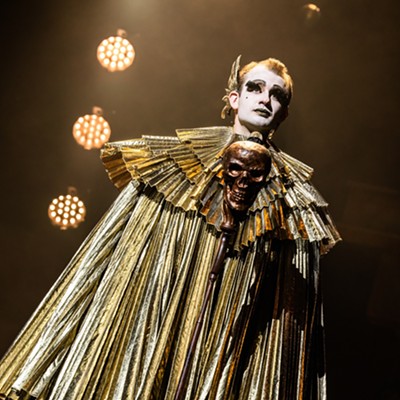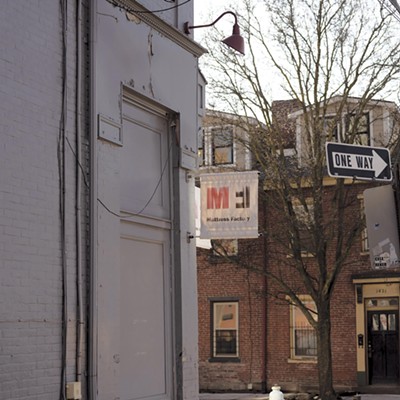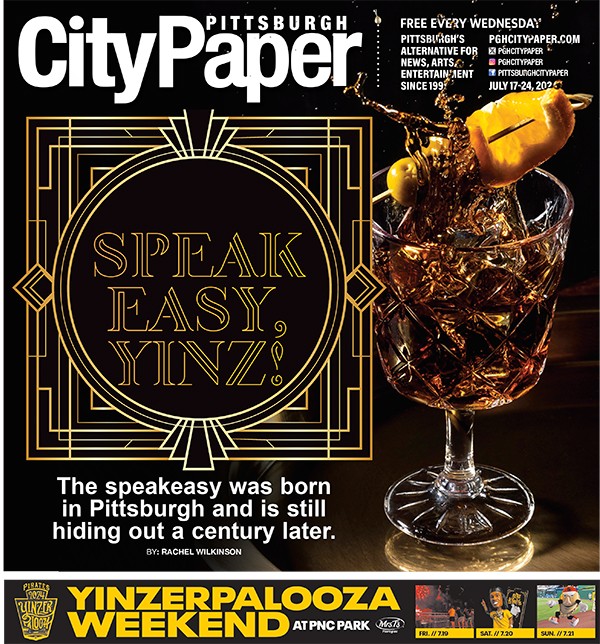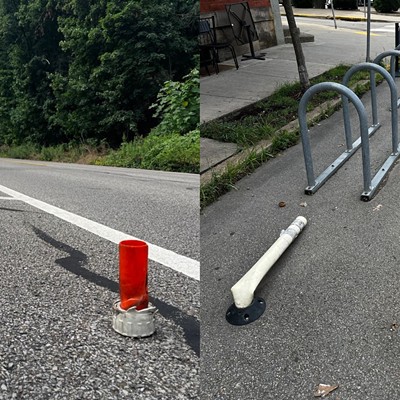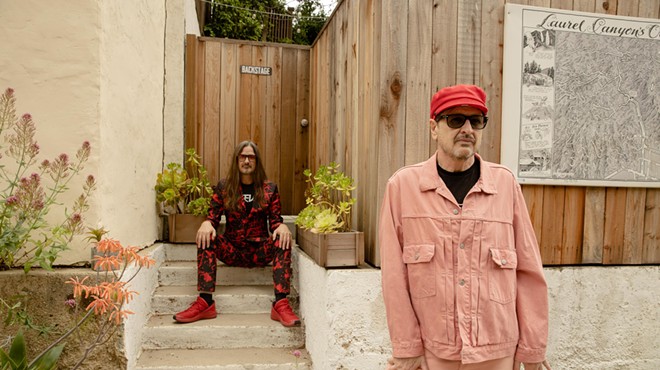Filling the first floor of the Mattress Factory’s exhibition space at 1414 Monterey Street, the installation “SPACEJUNK,” by artist David Bowen, uses a combination of robotics and twigs to pinpoint the oldest piece of man-made debris currently above the horizon. Standing like soldiers in formation are a group of 50 poles, each bearing a thin branch. Wobbling and twitching like fishing poles or divining rods, these sticks are synchronized into a delicate dance as they track debris. Once they lose contact the rods return to a downward-pointing resting position. The action happens mostly in unison, although occasionally one might go rogue.
With its network of electrical wires jumbled on the ground between poles, the piece at first seems a bit clumsy. But as the choreography plays out, each composition, based on the trajectory of the object and on each mechanism’s particular point of view, proves unique. Suddenly the intricacy of the vast universe unfolds and things that are playing out above us and beyond our immediate perception, like gravitational waves and the fabric of space-time, are embodied in a physical way that is more familiar.
By using an organic element as a pointer for his machines, Bowen also nudges us toward thinking about our technological evolution. Standing amidst gadgets that track other gadgets reminds us of our achievements but also of our impact on the natural world and, ultimately, of our inevitable merger with machines.
Similarly, Kevin Clancy’s “IRIS_SIRI,” in a third-floor gallery, references our ever-growing dependence on electronics and the insidiousness of screen time. Using a series of pieces to explore themes surrounding the internet and technological acceleration, the individual works are tied together by subtly shifting hues that bathe the room with soft, shimmery light. By covering the windows with Dichroic film, Clancy creates a trippy and soothing effect. But soon, the colors, sounds and mechanics that at first seemed attractive and eye-catching begin to prove (perhaps intentionally) irksome. On one wall, a mechanized sculptural hand endlessly scrolls through an iPad that yields only blocks of chakra colors, as if text and image have been redacted. In the center of the room are four laptops on poles, each with an attendant, life-sized kitty sculpture perched or curled up on the keyboard. The cats, to be sure, reference our cultural obsession with cat videos, but also the intimacy with which we are now enmeshed with and distracted by our devices. Behind the cats, the computer screens display “hypnotic cascades of infinitely accumulating browser windows,” as Clancy’s artist statement puts it.
Like Bowen, Clancy exposes the utopic possibilities as well as the absurd follies of our physical and virtual endeavors. And aspects of both artists’ works relate to Wendy Judge’s
Her sculpture here fills a portion of the room with a slope of earthy lumps, less regal than defeated. This mountain is a remnant, a memory, a substitute, both real and surreal.
These four artists make up part 1 of Factory Installed, with four more artists in part 2, at the museum’s main space, at 500 Sampsonia Way. While the exhibition shows discrete works by individual artists, the intersecting themes, whether intentional or accidental, make for a thought-provoking show.




